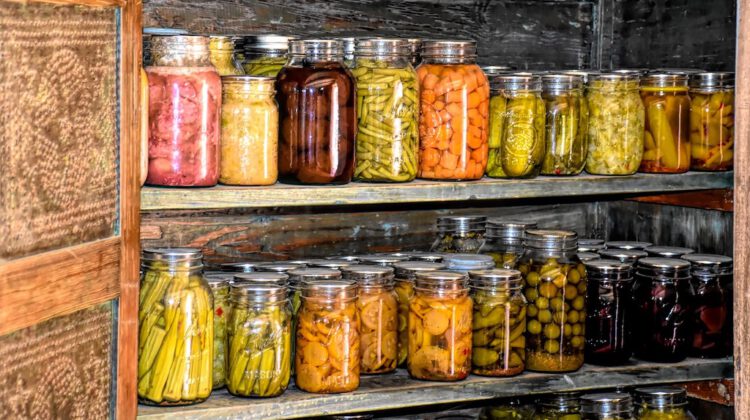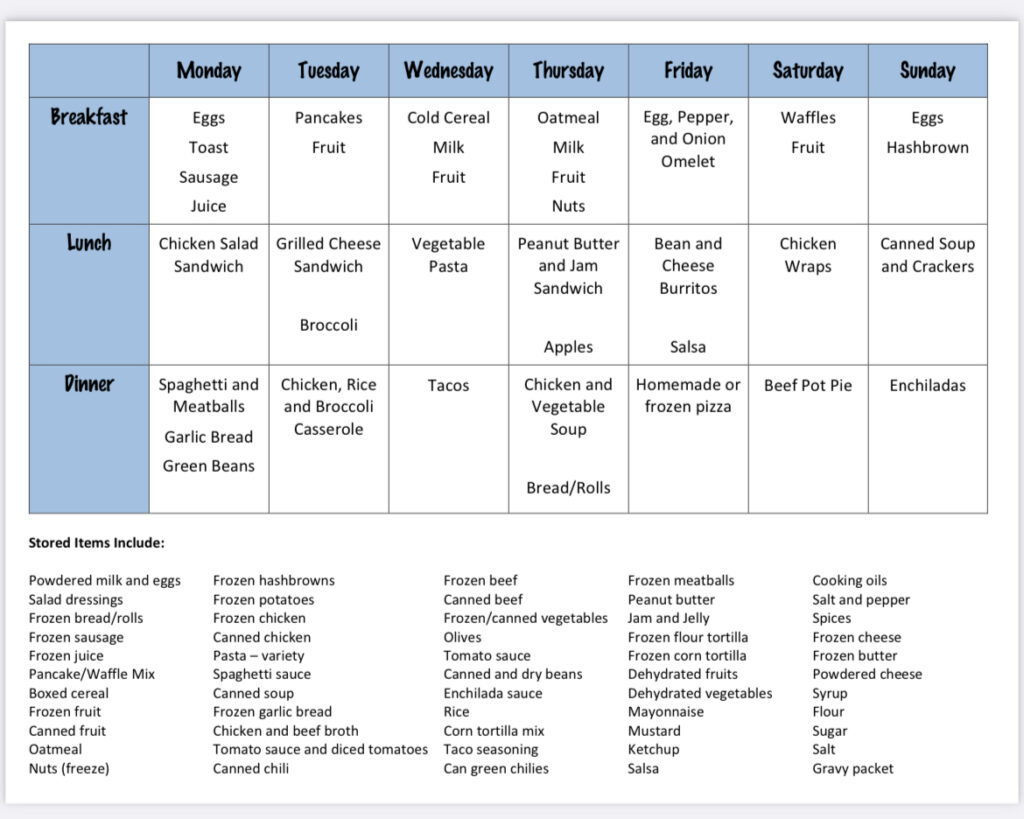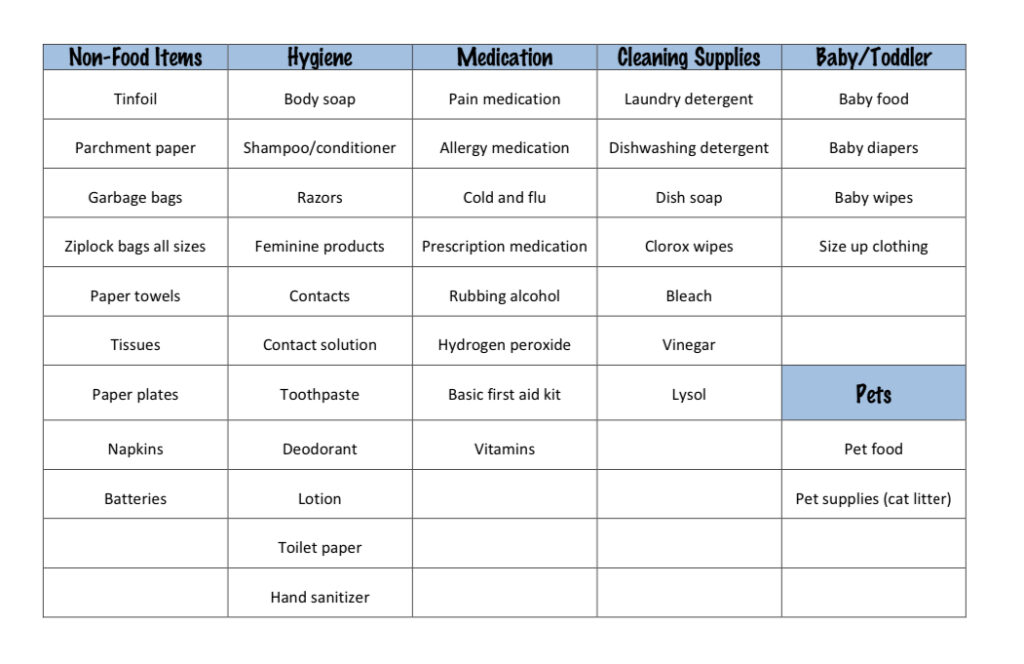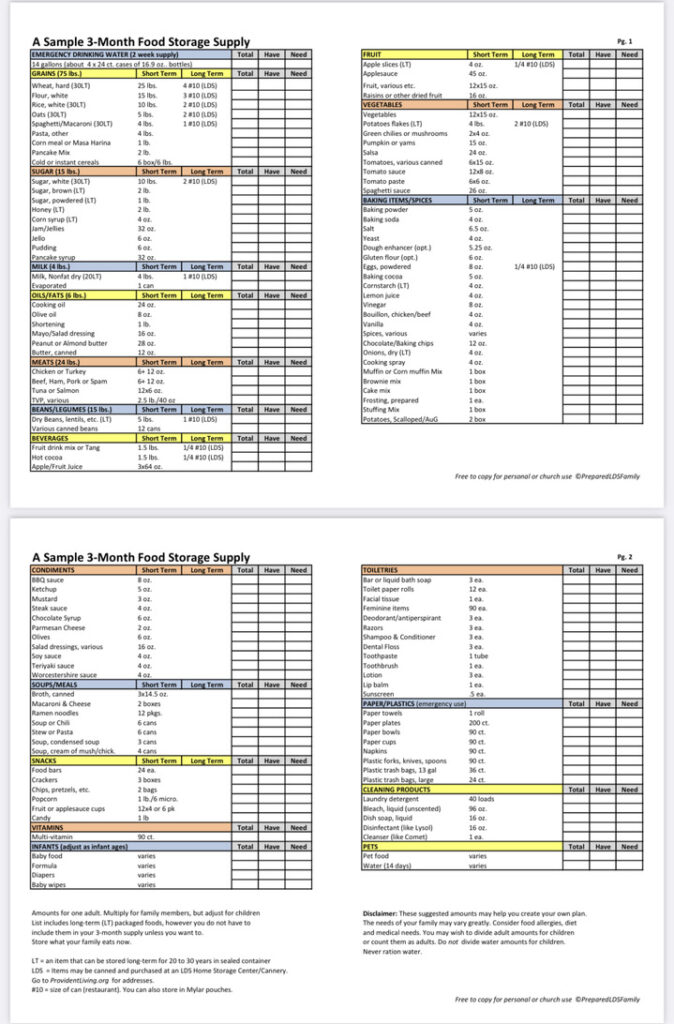
Emergencies can come in many forms: earthquakes, civil unrest, wildfires, loss of employment, inflation, and other disruption to your everyday life.
Preparing for emergencies can feel overwhelming, and honestly, it is.
Breaking it down into smaller, manageable pieces helps make preparing manageable.
WHY IS SHORT-TERM FOOD STORAGE IMPORTANT?
Now more than ever we need to be prepared. Sadly, many people still ask why we need to prepare for an emergency. Well, let’s see…
Earthquakes, inflation, job loss, pandemics, civil unrest, wildfires, flooding, and let’s not forget…
Supply chain issues, war, and gas shortages, whew!
The “why” is not to scare you, but to help you understand that putting in the time and resources can make your life a little better in an emergency.
Do you want to rely on the kindness of strangers to feed your family? Do you want to wait in a government food line so you don’t go hungry?
Look back throughout history and you will understand the “why” and how people dealt with hard times. We are not immune to big problems just because we live in America. Please, start with the basics to help your family and your community.
Whether you are brand new at emergency preparedness or need to go through the supplies you collected 20 years ago, now is the time to get it done.
Checklists are handy for big tasks and tracking progress, so grab some paper and pen and let’s get to work!
STEP ONE – ACQUIRE THREE MONTHS OF FOOD STORAGE
Every household should have a basic supply of extra food and water. Your food storage should consist of long-term (one year) and short-term (three months) storage.
Short-term food storage is a three-month supply of food to feed your family.
Your short-term food storage is relatively easy to acquire and manage. Simply stock your pantry and freezer with foods that your family already eats. Because you eat these types of food regularly, it will be easy to rotate through this short-term supply.
Think of what you would need on hand if you were not able to go to the grocery store for three months.
For this exercise, imagine that you wake up one morning and you discover that your entire family will not be able to leave the house for three months. You will not have access to any retail stores, you are unable to use your car, and you now have to shelter-in-place.
We are going to assume that we still have power and running water.
- Make a list of what your family would eat for breakfast, lunch, and dinner for one week.
- Don’t get fancy or think you need to create elegant meals. Remember, we are going to use what we have on hand and then we will have to resort to what is in our pantry and freezer.
- Then, take an inventory of what you currently have and then make a list of what you need to purchase to make this meal plan last for three months.
Here is an example:

SOME THINGS TO CONSIDER WHEN PLANNING
What does your family eat?
- Do your kids eat cold cereal every morning? What are the chances they would eat cereal with powdered milk or canned milk? If you get a resounding “no” maybe pancakes would be a better choice.
- Do you eat fresh fruits and vegetables every day? What can you purchase in canned goods or frozen foods to supplement?
- Only store what you eat. If your family does not eat tuna, don’t buy tuna. Sounds pretty simple, but some may get into the mindset of “if we were starving we would eat it.”
FREEZING ITEMS FOR LONGER SHELF LIFE
- What items can you freeze to make them last longer? For instance, did you know you could freeze butter, bread, and tortillas?
- You can cut up your own fruits and vegetables and freeze them. Consider investing in a FoodSaver to help with this.
- Do you know how to make bread from scratch? No? Then try buying frozen bread loaves instead.
- If you are unwilling to eat canned meat, purchase your own and store extra in the freezer. Or consider freeze dried options.
POWDERED OPTIONS
- Powdered milk, eggs, and butter are great options for when you run out of fresh dairy. You can use powdered alternatives when you cook and bake.
- Try using these options before an emergency so you can get used to the taste and texture.
- Powdered scrambled eggs are quite good! Mix up a batch and see if your family can tell the difference!
MILK OPTIONS
- Consider shelf stable Parmalat milk that can last up to six months in your pantry. This is available in the baking section of your grocery store.
- Mix up a batch of powdered milk and use the next time you bake. It is a great way to save time and money. If you mix the milk in a blender and make it super cold and frothy, your kids won’t notice a difference!
ROTATE!
The golden rule of food storage is rotate, rotate, rotate, so only store what you eat. Otherwise you will waste your hard earned money and resources throwing out expired food. Here are some tips on rotating your food.
- Put the newer items in the back and bring older items to the front of your shelf/pantry.
- Mark your items with a Sharpie the date it was purchased or the expiration date. This will quickly help you (or your kids) identify what to use first.
- Pay attention to expiration dates. If you are not going to use food, donate the items before they expire.
- Store items such as nuts, oil, and flour in the fridge or freezer to help them last longer.
- Keep a binder full of recipes to use with your food storage items. If you were not able to rotate the foods in your freezer or pantry quick enough, make a couple of meals from your freezer and pantry. Check out some of these recipes here!
DON’T GO INTO DEBT
Be careful about going into debt. You don’t need to buy three extra months of food all at once.
- Pick up extra items every time you shop as your budget allows.
- Watch for case lot sales or buy in bulk.
- Shop the clearance section. Stores will need to get rid of items that are about the expire quickly. You can then freeze or repackage the items to help them last longer.
LEARN SOME NEW SKILLS
In an emergency situation, you may need to get creative. Learning a new skill BEFORE you need it will always be useful.
- Learn how to make tortillas and bread from scratch.
- Learn how to make butter out of powdered milk.
- Find and use recipes that include items from your food storage ONLY.
- What can you do with stale bread? Old cooking oil?
- Do you have a garden? Try using a dehydrator for your extra harvest.
The Food Storage Organizer website has some great free printables to help you get started.
This is one of her PDF’s that can help you get organized.
Think of it like this:
My family eats lots of spaghetti so I make sure to have extra pasta, sauce, and frozen meatballs. I will also buy hamburger meat in bulk to save money and then section it out a freeze.
I also store canned chili, soups, tomato sauce, chicken broth, cream of mushroom, salsa, rice, and canned fruit. I have recipes for all of the items I store and every time I buy new canned goods, I rotate the older cans to the front of the shelf, and put the newer cans in the back. (tip: mark the purchase date or expiration date with a sharpie on pantry items.)
I also have frozen fruits and vegetables, a variety of beans, frozen bread, and frozen meat.
I will freeze packages of flour tortillas and corn tortillas (wrapped in tin foil) to extend their shelf lift.
I store extra bisquick, sugar, flour, corn meal, spices, salt, pepper, oil, and baking goods.
Again, just make sure to buy the size you will use. For instance, flour only lasts three months to a year (a bit longer if you freeze it) so if you don’t bake a lot, buy a smaller bag of flour.
With these pantry items a few of the meals I can make are:
- Chicken and broccoli pasta/rice (frozen chicken, frozen broccoli, pasta or rice, cream of chicken soup, mayonnaise, bread crumbs)
- Spaghetti
- Homemade pizza
- Homemade soups: (frozen or canned vegetables, pasta, chicken broth, spices, canned chicken)
- Mexican casserole
- Tacos
- Curry
- Chicken pot pie: (Bisquick for crust, canned chicken, frozen vegetables, cream of mushroom soup, and powdered milk)
- Enchiladas
- Ziti
Don’t forget to grab extras for everyday items like cooking oil, ketchup, salt, pepper, spices, baking supplies, and syrup.
Storing extra baking items like baking soda, baking powder, powdered sugar, brown sugar, cocoa powder, and chocolate chips is a good idea. I think oatmeal chocolate chip cookies would be a necessity in this scenario! Maybe throw some ice cream in the freezer as well 🙂
Non-Food Items
Don’t overlook your other basic needs. What else would you likely run out of if you could not go to the grocery store for three months? Think about tin foil, plastic wrap, laundry detergent, toothpaste, feminine products, and body soap. Bleach (for water purification) and vinegar are also good items to keep on hand.



